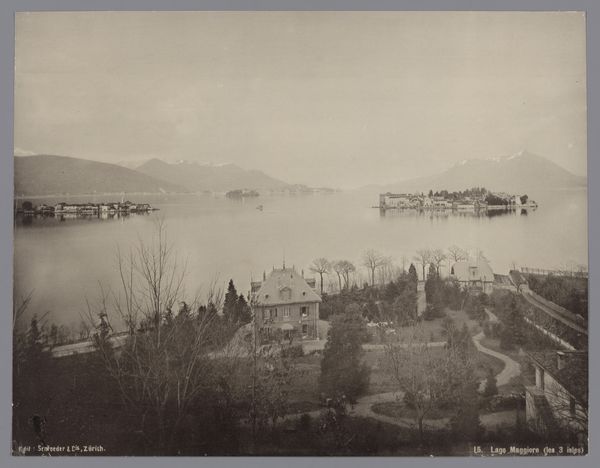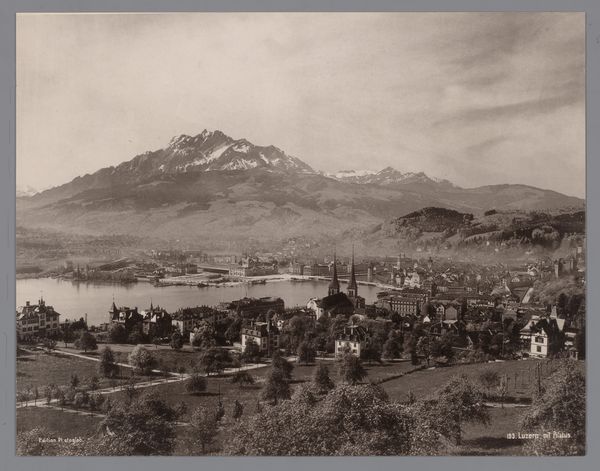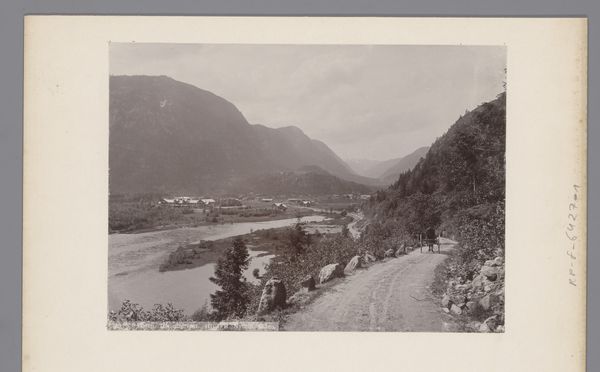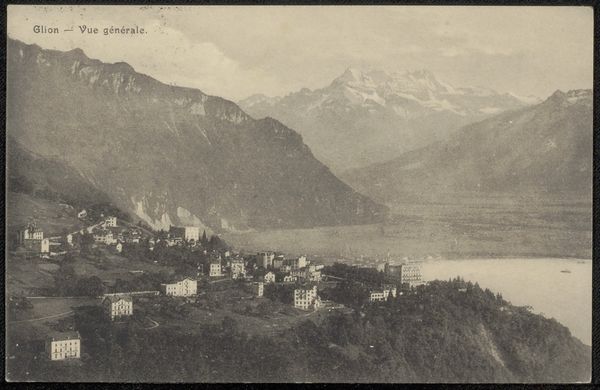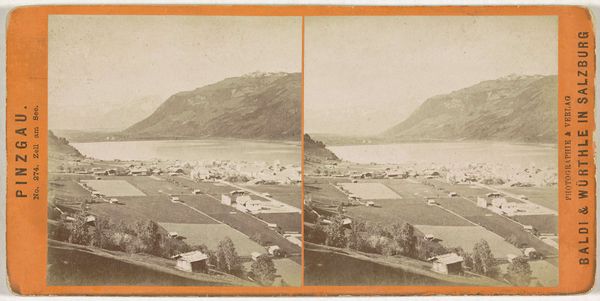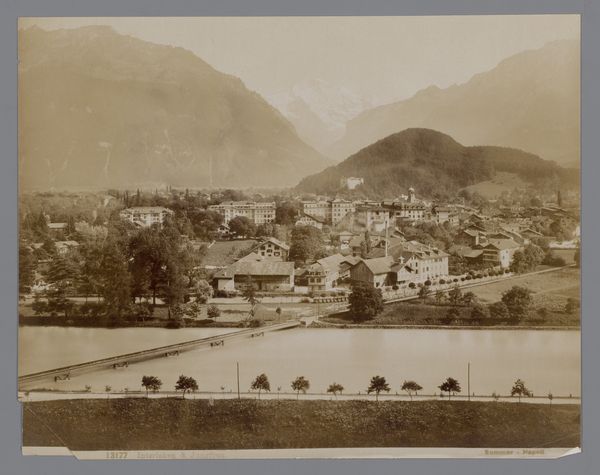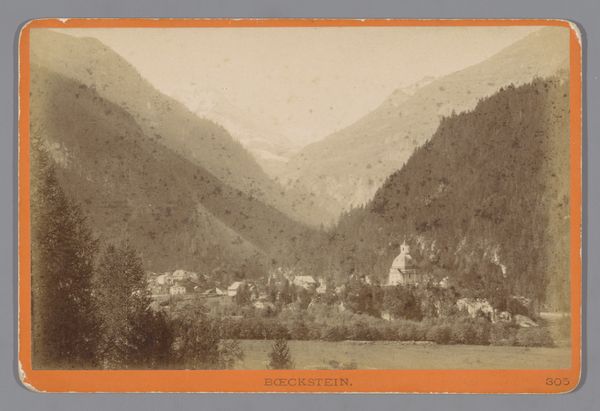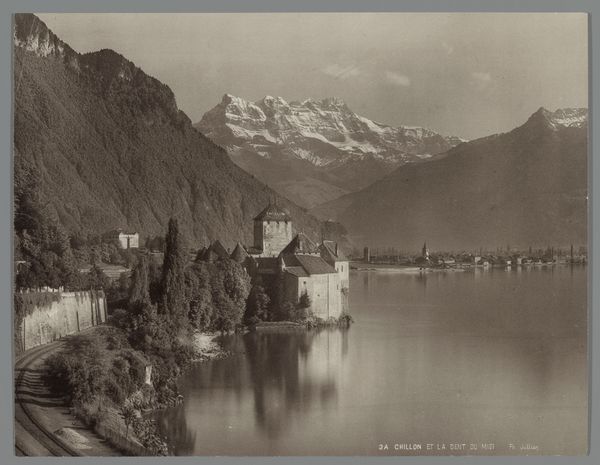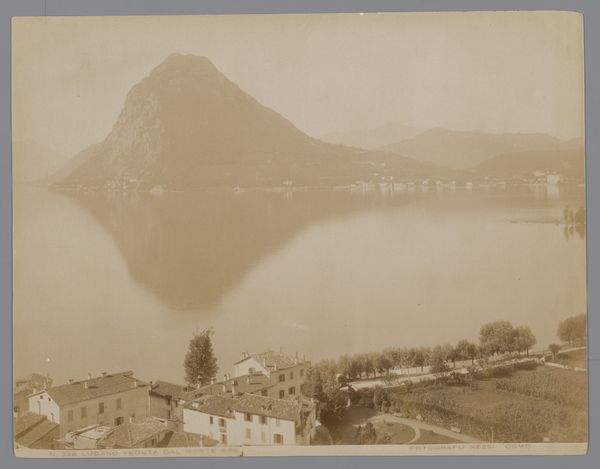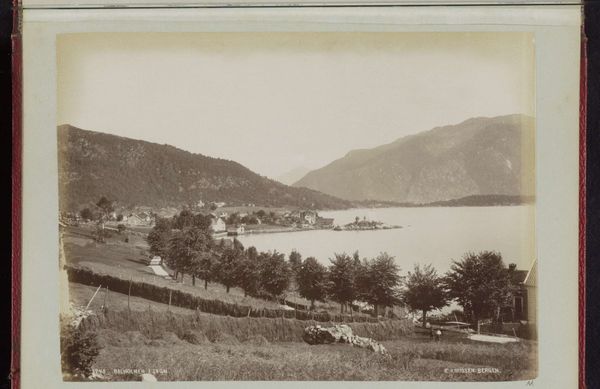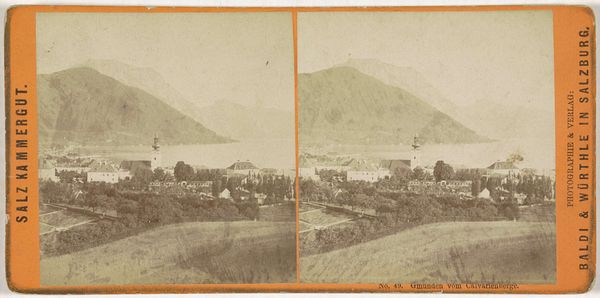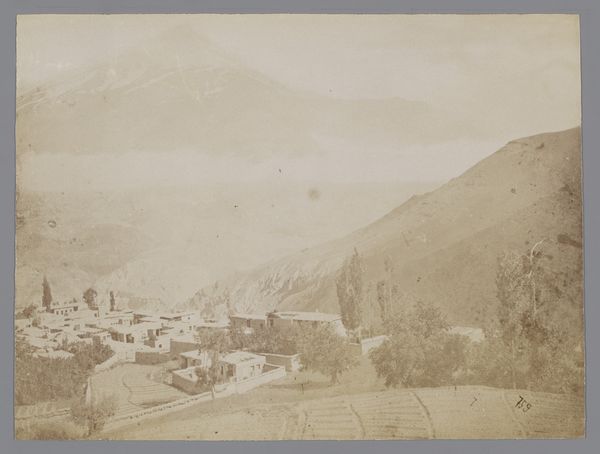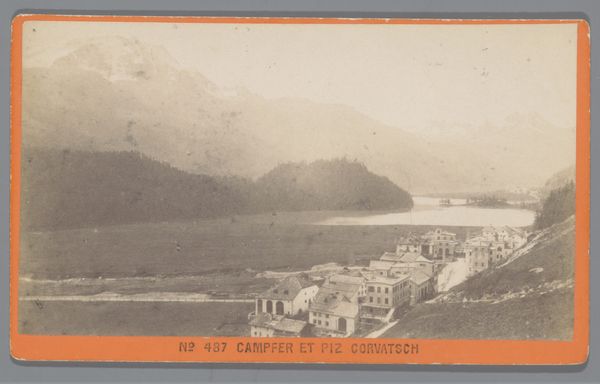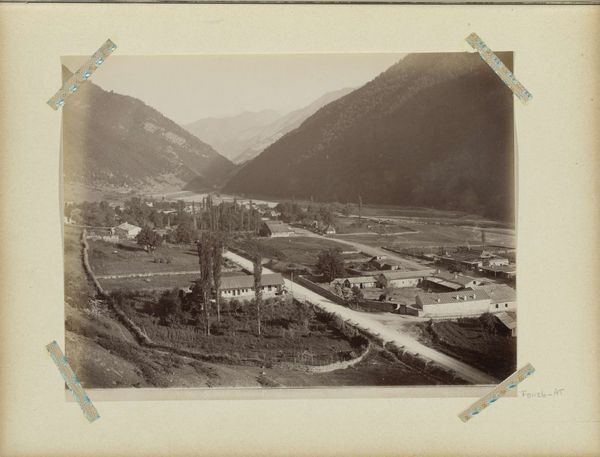
photography
#
landscape
#
photography
#
coloured pencil
#
mountain
#
cityscape
#
realism
Dimensions: height 95 mm, width 155 mm
Copyright: Rijks Museum: Open Domain
Curator: Looking at this vista, what comes to mind? Editor: I'm struck by its stillness. A kind of pre-industrial serenity blankets the scene, even with the hints of a developing infrastructure. It’s almost melancholic in its quietude. Curator: This albumen print, "Gezicht op Zell am See en het Steinernes Meer in Oostenrijk", captured sometime between 1870 and 1890 by Würtle & Spinnhirn, offers precisely that—a curated version of progress. Editor: “Curated” is the operative word here, isn’t it? We see the town nestled serenely, but how much of the social reality is deliberately absent? Are there factories or other sites of labor purposefully left out? This pristine scene presents a certain idyllic vision of Austrian life. Curator: Precisely! The artistic choices here speak volumes. The way the mountains loom, not threateningly, but almost protectively, certainly paints an inviting picture. Landscape photography like this was a powerful tool for nation-building, for marketing both place and identity. The picturesque could easily erase disparities. Editor: And in whose eyes is it picturesque? Early tourism catered to a very specific, affluent demographic. So, the lens becomes complicit in crafting an exclusive experience and furthering an agenda. It omits so much to highlight the romantic ideal, even if colored pencils were involved somehow, as indicated by its metadata. Curator: Certainly, this artwork showcases an imagined idyll rather than stark reality. One can look at photographs like this as products designed for mass consumption. Editor: Well, engaging with images like this encourages critical analysis of whose stories are elevated, whose are erased, and what values are being projected, then and now. It underscores that art—even seeming straightforward landscape photography—is never neutral. Curator: Indeed, questioning visual representation in artworks opens meaningful lines for analysis. Editor: A vital point when confronting visual histories and their continued impact.
Comments
No comments
Be the first to comment and join the conversation on the ultimate creative platform.
